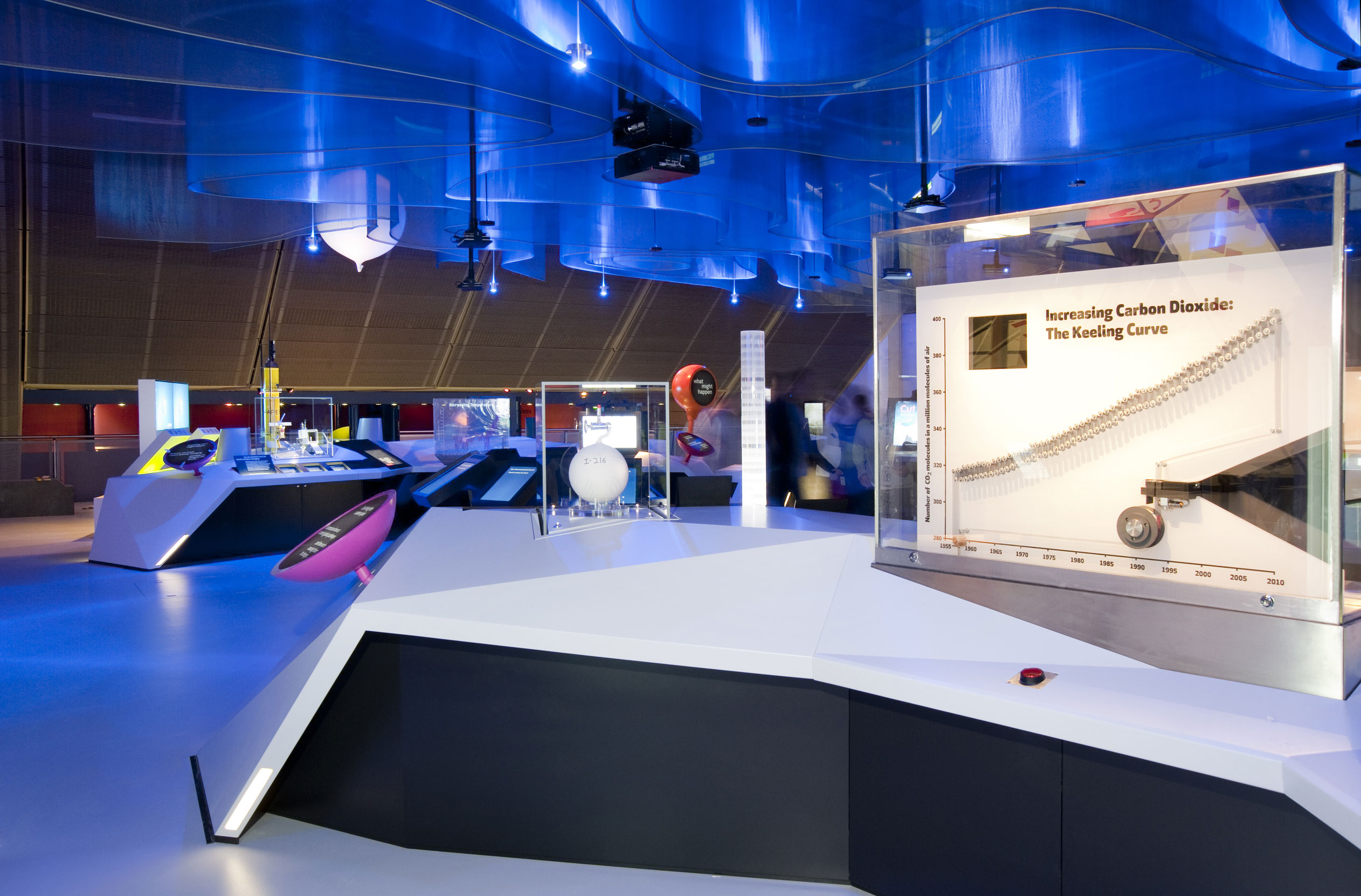Howard Covington and Prof. Chris Rapley reflect on the latest climate change report.
In 2010, the Science Museum opened atmosphere, a gallery exploring climate science. Three years on and the Museum is a partner in a commercial venture to build the UK’s largest solar farm on a disused airfield it owns near Swindon. The project will eventually generate 40mw of electricity, enough for 12,000 homes.

Here in microcosm is what is taking place in countries around the world as our understanding of the threat of climate change deepens and slowly prompts action to transform the energy infrastructure on which we rely. Are the many piecemeal actions of this kind enough to leave us feeling confident?
The Intergovernmental Panel on Climate Change has recently confirmed the likely consequences of continuing to pump greenhouse gasses into the atmosphere. As a global community, we are about as well informed on climate science as we might hope to be. But the uncertainties that surround climate change still leave us guessing where things are likely to come out.
There are three big uncertainties. The first is how fast humanity will cut carbon emissions. For the moment, we are on track to double atmospheric carbon dioxide by some point in the second half of the century. The second is how the climate will respond. A widely used indicator is the change in global average surface temperature when carbon dioxide concentration doubles. The best estimate is in the range 1.5 to 4.5 degrees centigrade. The third uncertainty is the impact of such a change on future human wellbeing and the material damages it might cause.
In the absence of stronger action than is currently evident there is a finite risk that we could hit 4 degrees of warming in the second half of the century, with the possibility of amplifying feedbacks locking in further temperature increasing processes over which we would have no control. The resulting climate changes would play out over centuries and millennia, producing permanent climate instabilities and shifts not experienced over human history.
Risk could be reduced by policy changes among the principal emitters. By far the simplest action would be an agreed price for carbon emissions to accelerate the piecemeal transformation of energy infrastructure already underway. We might also get lucky if it turns out that the response of the climate to emissions lies at the lower end of the range. We should know where we stand in the next few decades. Meanwhile we might reasonably spend a moment on the implications of a 4 degree world.
Here we are again beset with uncertainty. We don’t know with precision how fast polar ice sheets will disintegrate and sea level will rise. Nor do we know how climatic zones may shift or how higher average temperatures and rainfall will combine with more frequent weather extremes and changing weather patterns to disrupt water supplies and agriculture.
The pattern of cereal production could be significantly affected. Cereal demand may double by 2050 in response to population increases and changes in food preferences. This demand might be met by improved technology and waste elimination. Weather extremes and instability at 4 degrees may cut crop yields significantly, creating a further gap to be filled, perhaps by genetically improved robustness and the cultivation of newly productive northern lands.
Geo-engineering might provide a temporary window of opportunity for a crash programme to decarbonise economies and sequester atmospheric carbon dioxide, although with a substantial risk of unintended and unwelcome consequences. On the other hand we might have to cope with disruption triggered by populations seeking to move from areas rendered inhospitable by inundations, floods, drought, extreme temperatures, fires and local shortages of food and water.
How all of this will play out is clearly impossible to say. Optimists believe that with luck, free markets and technological ingenuity we could rise to a 4 degree challenge if we can’t avoid it altogether. Pessimists argue that 4 degrees is beyond adaptation and may lead to a period of dislocation. Either way our lives are likely to be transformed in the next few decades as we thoughtfully re-engineer food and energy production and relocate climate migrants or rather more chaotically seek to respond to the multiple pressures of population growth, energy needs and climate disruption.
The UK is relatively small, open and unprotected and may not do well in the face of climate disruption. On the other hand it is highly creative and nurtures much scientific and technological talent. Its leading universities are rich in individuals and teams who understand the technologies of a low carbon future. It has an opportunity to lead an industrial revolution that is poised to happen. The case for maximising long-term value and reducing risk by seizing this opportunity is powerful.
Preventing dangerous climate change is principally a matter for the world’s largest emitters. The UK, however, has set an example by adopting tough emissions targets and by using its international influence and scientific strength for the good. It should continue to advance policies that spur a new industrial revolution from which it could benefit greatly, while heading off a climate transition that it may struggle to cope with.
The Science Museum is one of the world’s finest institutions in which to explore the history of science and technology. It is greatly to its credit that it is not only informing its visitors about the climate challenges ahead but also playing its part in dealing with them.
Howard Covington is a trustee of the Science Museum. Chris Rapley is Professor of Climate Science at University College London and a former director of the Science Museum.